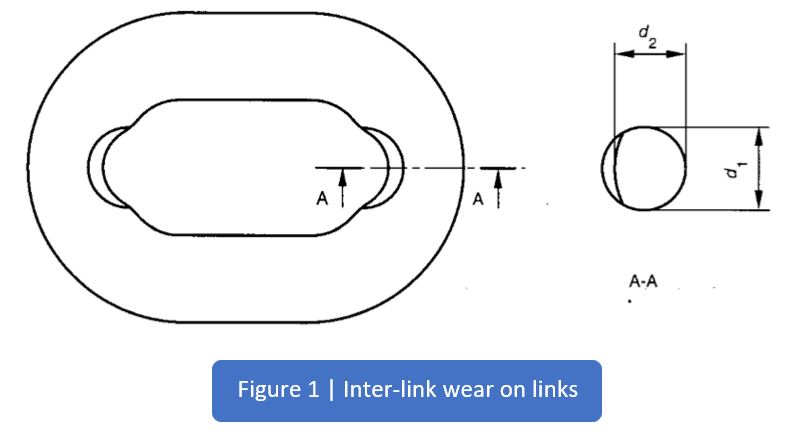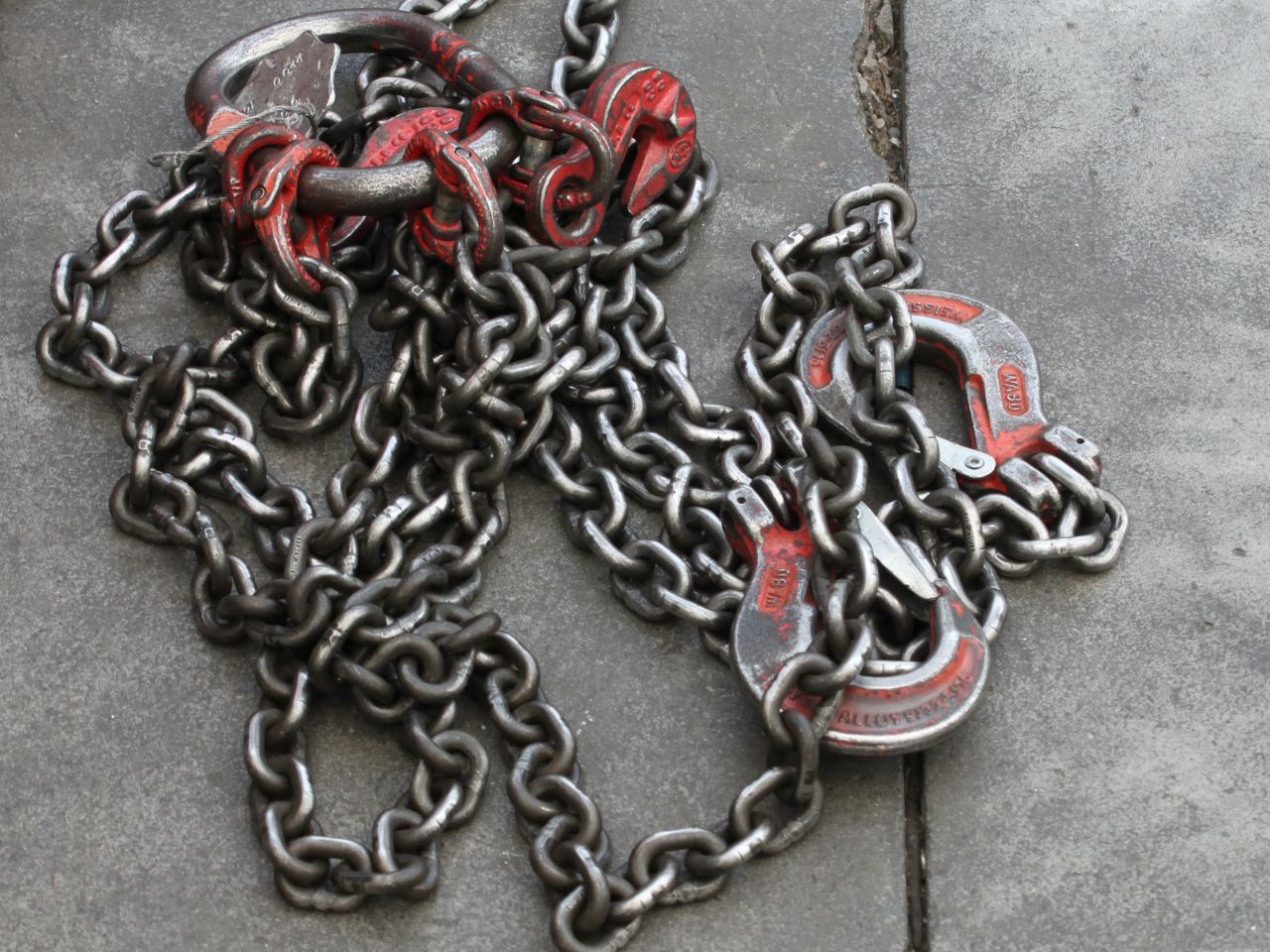By H-Lift | 22 April 2024 | 0 Comments
What is the Rejection Criteria for Chain Sling ?

The chain should be rejected and referred to a competent person if any of the following are observed:
- The chain markings are illegible, i.e. information on the chain sling identification and/or the working load limit
- Distortion of the upper and lower terminals
- Chain stretch – if the chain links are elongated or if there is any lack of free articulation between the links or noticeable difference in the leg length of multi-leg chain slings, the chain may have been stretched
- Wear – wear by contact with other objects usually occurs on the outside of the straight portions of the links where it is easily seen and measured. Wear between adjoining links is hidden. The chain should be slack and adjoining links rotated to expose the inner end of each link. Inter-link wear, as measured by taking the diameter indicated (d1) and one at right angles, (d2) may be tolerated until the mean of these diameters has been reduced to 90% of the nominal diameter (dn), see figure 1 below

- Note that this roughly equates to an overall loss of material of just under 9% of the original section, which LEEA rounds down to 8% permissible loss of sectional area.
- Cuts, nicks, gouges, cracks, excessive corrosion, heat discoloration, bent or distorted links, deposits which cannot be removed, or any other defects.
- Signs of opening out of hooks, i.e. any noticeable increase in the throat openings or any other form of distortion in the lower terminal. The increase in throat opening should not exceed 10% of the nominal value or be such as to allow the safety latch, if fitted, to become disengaged.

What are the chain grades and how are they derived ?
What is the Difference between Hoist Chain and Sling Chain ?
Leave a Reply
Your email address will not be published.Required fields are marked. *
TAGS